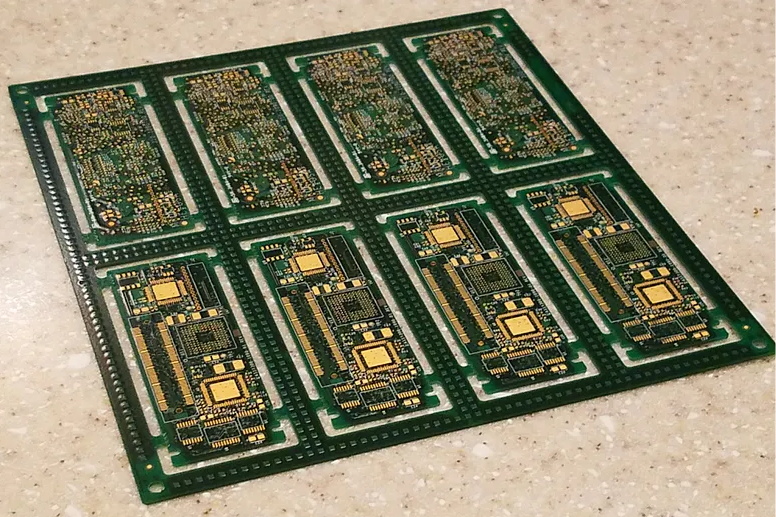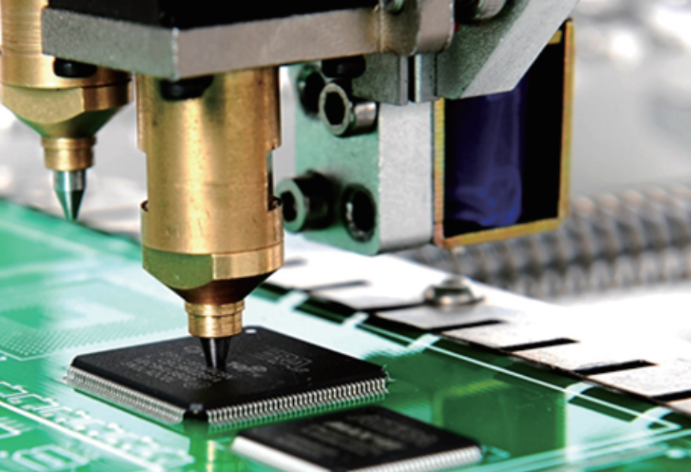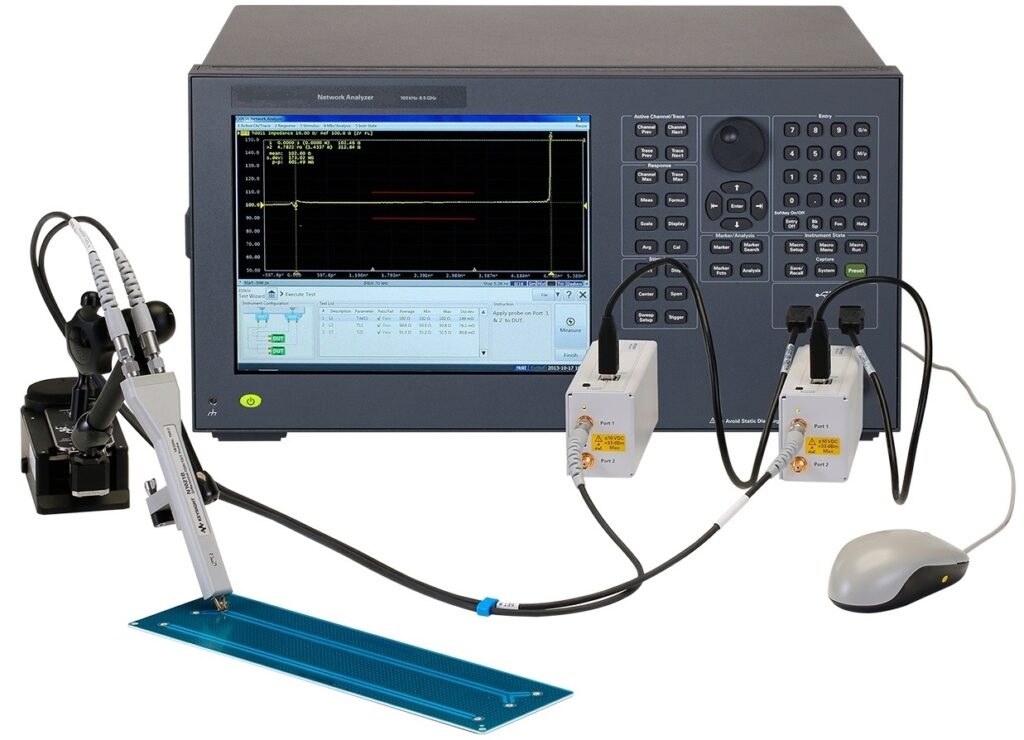In a world increasingly focused on sustainability, the electronics industry is stepping up with innovative solutions to reduce environmental impact. One of the most promising advancements is the development of biodegradable PCB substrates. But what exactly are biodegradable PCB materials, and why do they matter? Simply put, these are materials used in printed circuit boards (PCBs) that can naturally break down over time without leaving harmful residues, offering a greener alternative to traditional substrates. In this blog, we dive deep into the science behind biodegradable PCB substrates, exploring their properties, key materials like polylactic acid (PLA) and cellulose, and the advantages they bring to sustainable electronics design.
Why Biodegradable PCB Substrates Are the Future of Electronics
The electronics industry generates millions of tons of electronic waste (e-waste) annually. Traditional PCB substrates, often made from fiberglass and epoxy resins like FR-4, are not biodegradable and can take centuries to decompose, contributing to landfill pollution and environmental harm. Biodegradable PCB substrates offer a solution by using materials that break down naturally, reducing the long-term impact of discarded electronics.
Beyond reducing waste, these substrates align with global efforts to create a circular economy, where products are designed to be reused, recycled, or decomposed. For engineers and manufacturers, adopting biodegradable materials can also meet growing consumer demand for eco-friendly products and comply with stricter environmental regulations.
What Are Biodegradable PCB Substrates?
Biodegradable PCB substrates are base materials used in the construction of printed circuit boards that can decompose through natural processes, such as microbial activity, into non-toxic components like water, carbon dioxide, and organic matter. Unlike conventional substrates, which rely on synthetic materials, biodegradable options are derived from renewable resources, making them a sustainable choice for electronics.
These substrates must still meet the functional requirements of PCBs, including providing mechanical support, electrical insulation, and thermal stability. Researchers and manufacturers are exploring various biodegradable materials to balance performance with environmental benefits, with polylactic acid (PLA) and cellulose-based materials leading the way.
Key Biodegradable PCB Materials and Their Properties
Understanding the properties of biodegradable PCB materials is crucial for engineers looking to integrate them into designs. Below, we explore two prominent materials—polylactic acid (PLA) and cellulose—and their suitability for PCB applications.
Polylactic Acid (PLA) PCB Substrate: Properties and Potential
Polylactic acid, commonly known as PLA, is a biodegradable thermoplastic derived from renewable resources like corn starch or sugarcane. It has gained attention as a potential PCB substrate due to its eco-friendly nature and ease of processing.
- Mechanical Properties: PLA offers moderate tensile strength, typically around 50-70 MPa, which is lower than traditional FR-4 substrates (around 300 MPa). While this limits its use in high-stress applications, it can be sufficient for low-load or disposable electronics.
- Thermal Stability: PLA has a relatively low glass transition temperature (Tg) of about 60°C, meaning it softens at higher temperatures. This makes it less ideal for high-heat environments unless modified with additives or reinforcements.
- Electrical Insulation: PLA provides decent dielectric properties, with a dielectric constant of approximately 2.5-3.0 at 1 MHz, comparable to some traditional materials. However, its moisture absorption (around 1-2%) can affect long-term electrical performance.
- Biodegradability: Under industrial composting conditions (high temperature and humidity), PLA can degrade within 6-12 months, significantly faster than conventional materials.
PLA is best suited for short-lifecycle products, such as single-use sensors or temporary electronics, where sustainability is prioritized over durability. Research continues to improve its thermal and mechanical properties through blending with other materials or additives.
Cellulose PCB Advantages: Strength and Sustainability
Cellulose, a natural polymer found in plant cell walls, is another promising material for biodegradable PCB substrates. Often derived from wood pulp or agricultural byproducts, cellulose can be processed into forms like lignocellulose nanofibrils (LCNF) to create rigid, lightweight substrates.
- Mechanical Properties: Cellulose-based substrates, especially when processed into nanofibrils, exhibit impressive tensile strength, often ranging from 100-200 MPa, closer to traditional substrates. Their flexibility also makes them suitable for wearable or flexible electronics.
- Thermal Stability: While raw cellulose has a lower thermal tolerance (decomposing around 200-250°C), treatments and reinforcements can improve its performance for moderate-temperature applications.
- Electrical Insulation: Cellulose offers a dielectric constant of about 3.0-4.0 at 1 MHz, providing adequate insulation for many low-to-medium frequency applications. Its natural porosity, however, may require coatings to prevent moisture absorption.
- Biodegradability: Cellulose decomposes naturally within weeks to months under the right conditions, leaving no toxic residues. Its abundance as a renewable resource also makes it cost-effective.
The advantages of cellulose in PCBs include its renewability, lightweight structure, and potential for customization through chemical or physical treatments. Recent studies have demonstrated its use in eco-friendly prototypes, such as computer peripherals, showcasing its practical application in sustainable electronics.
Advantages of Biodegradable PCB Substrates in Electronics
Switching to biodegradable PCB substrates offers several benefits, not just for the environment but also for innovation in electronics design. Here are some key advantages:
- Reduced E-Waste: With over 50 million metric tons of e-waste generated globally each year, biodegradable substrates help minimize landfill accumulation by breaking down naturally after use.
- Lower Carbon Footprint: Materials like PLA and cellulose are derived from renewable sources, reducing reliance on fossil fuel-based synthetics and cutting greenhouse gas emissions during production.
- Regulatory Compliance: As governments worldwide impose stricter e-waste regulations, using biodegradable materials can help manufacturers stay ahead of compliance requirements.
- Market Appeal: Eco-conscious consumers are more likely to support brands that prioritize sustainability, giving companies a competitive edge with greener products.
- Innovation Opportunities: Biodegradable substrates open doors to new applications, such as disposable medical devices, environmental sensors, and short-term consumer electronics, where traditional materials may be over-engineered.
Challenges in Adopting Biodegradable PCB Materials
While the benefits are clear, biodegradable PCB substrates face several hurdles before they can fully replace traditional materials. Understanding these challenges helps engineers and manufacturers make informed decisions.
- Performance Limitations: As noted with PLA and cellulose, biodegradable materials often have lower thermal and mechanical stability compared to FR-4, which can withstand temperatures up to 130°C and offers tensile strength above 300 MPa. This restricts their use in high-performance or long-term applications.
- Moisture Sensitivity: Many biodegradable materials absorb moisture more readily than synthetic substrates, potentially leading to dimensional changes or degraded electrical performance over time.
- Cost and Scalability: While raw materials like cellulose are abundant, processing them into high-quality PCB substrates can be costly. Large-scale production methods are still under development to make these materials economically viable.
- Degradation Control: Biodegradable materials must be designed to degrade only after their useful life, not during operation. Balancing durability with eventual decomposition remains a key area of research.
Recent Developments in Sustainable PCB Technology
The field of biodegradable PCB substrates is evolving rapidly, with ongoing research addressing the challenges mentioned above. For instance, scientists are experimenting with hybrid materials, combining PLA or cellulose with natural fibers or bio-based resins to enhance strength and thermal resistance. Some studies have achieved improved glass transition temperatures for PLA blends, pushing them closer to 80-100°C, making them more viable for moderate-heat applications.
Additionally, advancements in surface treatments and coatings are helping to reduce moisture absorption in cellulose-based substrates, ensuring better reliability in humid environments. Innovations like lignocellulose nanofibrils (LCNF) have shown promise in creating rigid, high-strength substrates through thermal and pressure treatments, with processes involving pressures of 50-1500 kN and temperatures of 30-120°C.
These developments signal a future where biodegradable PCBs could match or even exceed the performance of traditional materials while maintaining their environmental benefits.
How Engineers Can Integrate Biodegradable Substrates into Designs
For engineers looking to adopt biodegradable PCB substrates, the transition requires careful planning. Here are some practical steps to consider:
- Application Assessment: Evaluate whether the product’s lifecycle and operating conditions align with the limitations of biodegradable materials. Short-term or low-heat applications are ideal starting points.
- Material Selection: Choose the right biodegradable substrate based on required mechanical, thermal, and electrical properties. For example, cellulose might be better for flexible designs, while PLA suits disposable devices.
- Testing and Prototyping: Conduct thorough testing to ensure the material withstands the intended environment. Measure parameters like dielectric constant (targeting 2.5-4.0 for most applications) and tensile strength to confirm reliability.
- Collaboration with Suppliers: Work closely with material suppliers to source high-quality biodegradable substrates and stay updated on the latest advancements.
- End-of-Life Planning: Design products with disposal or composting in mind, ensuring users understand how to discard biodegradable electronics responsibly.
The Path Forward for Sustainable Electronics
Biodegradable PCB substrates represent a significant step toward a more sustainable electronics industry. Materials like polylactic acid and cellulose offer unique properties that, while not yet on par with traditional substrates in every aspect, provide viable options for specific applications. Their environmental benefits—reducing e-waste, lowering carbon footprints, and supporting renewable resources—make them a critical part of the push for greener technology.
As research progresses, we can expect biodegradable materials to become stronger, more heat-resistant, and more cost-effective, paving the way for broader adoption. For now, engineers and manufacturers have the opportunity to lead the charge by experimenting with these materials in niche applications and contributing to a future where electronics leave no lasting harm on the planet.
By understanding the science behind biodegradable PCB substrates, from their material properties to their practical advantages, the industry can unlock new possibilities in sustainable design. Whether you’re working on disposable sensors, wearable tech, or eco-friendly consumer products, these materials offer a path to innovation with purpose.
 ALLPCB
ALLPCB







